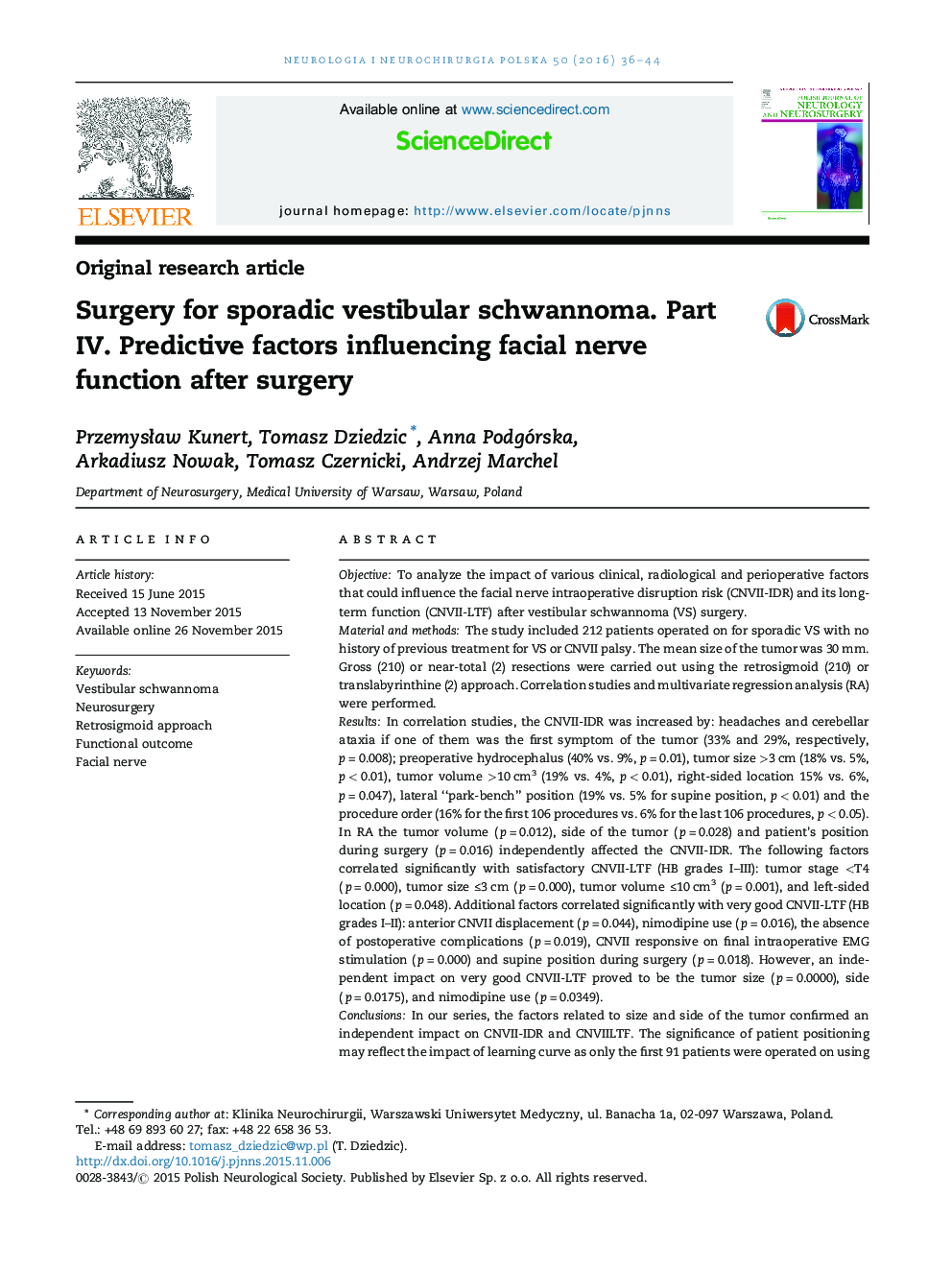| Article ID | Journal | Published Year | Pages | File Type |
|---|---|---|---|---|
| 2152650 | Neurologia i Neurochirurgia Polska | 2016 | 9 Pages |
ObjectiveTo analyze the impact of various clinical, radiological and perioperative factors that could influence the facial nerve intraoperative disruption risk (CNVII-IDR) and its long-term function (CNVII-LTF) after vestibular schwannoma (VS) surgery.Material and methodsThe study included 212 patients operated on for sporadic VS with no history of previous treatment for VS or CNVII palsy. The mean size of the tumor was 30 mm. Gross (210) or near-total (2) resections were carried out using the retrosigmoid (210) or translabyrinthine (2) approach. Correlation studies and multivariate regression analysis (RA) were performed.ResultsIn correlation studies, the CNVII-IDR was increased by: headaches and cerebellar ataxia if one of them was the first symptom of the tumor (33% and 29%, respectively, p = 0.008); preoperative hydrocephalus (40% vs. 9%, p = 0.01), tumor size >3 cm (18% vs. 5%, p < 0.01), tumor volume >10 cm3 (19% vs. 4%, p < 0.01), right-sided location 15% vs. 6%, p = 0.047), lateral “park-bench” position (19% vs. 5% for supine position, p < 0.01) and the procedure order (16% for the first 106 procedures vs. 6% for the last 106 procedures, p < 0.05). In RA the tumor volume (p = 0.012), side of the tumor (p = 0.028) and patient's position during surgery (p = 0.016) independently affected the CNVII-IDR. The following factors correlated significantly with satisfactory CNVII-LTF (HB grades I–III): tumor stage
